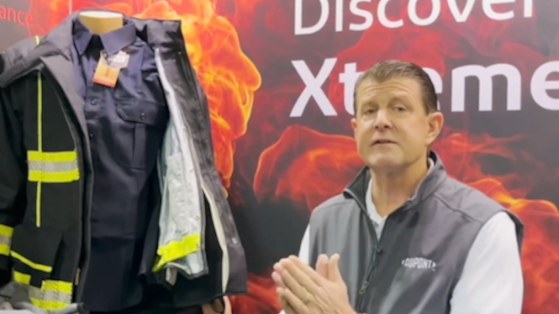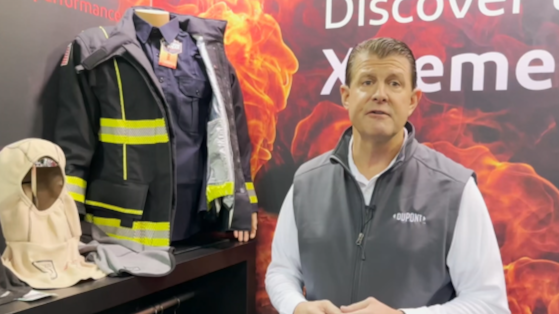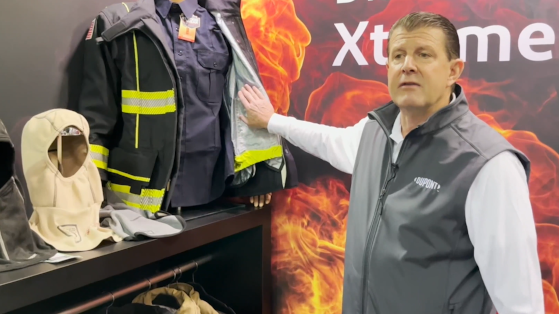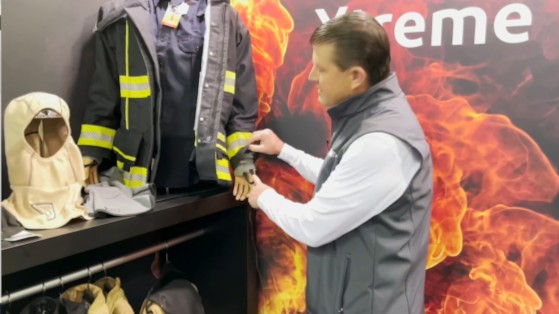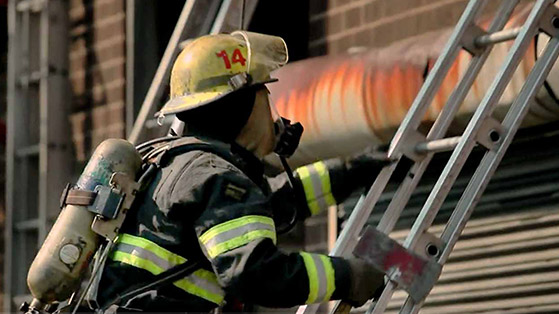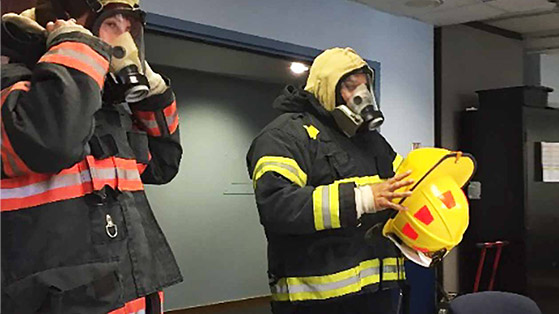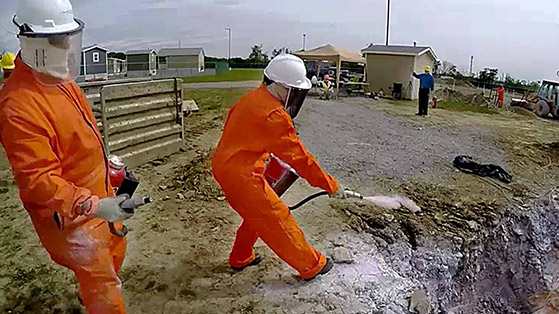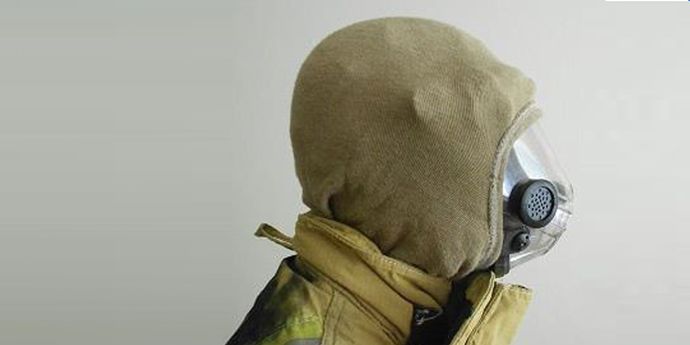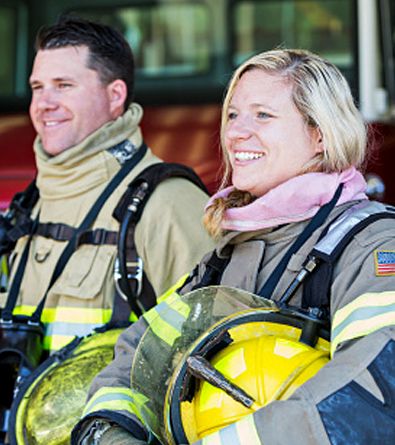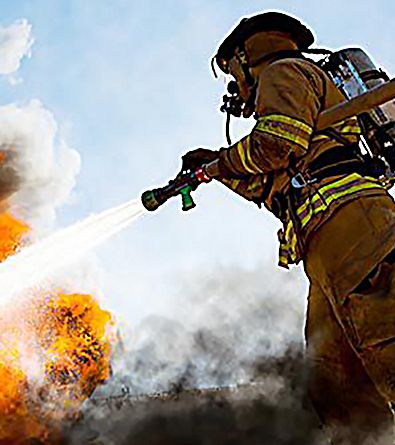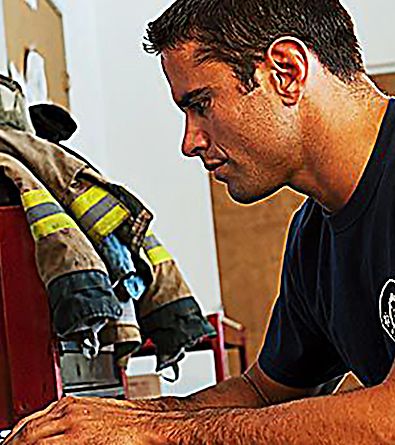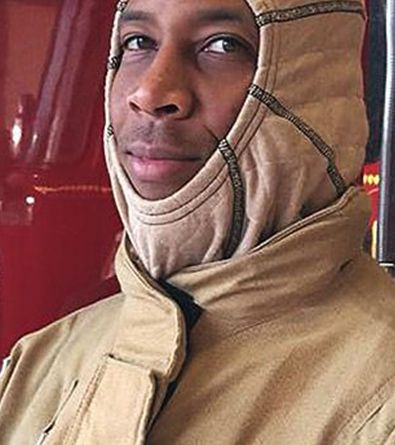How the layers of your turnout gear work together
Nomex® for turnout gear
Firefighter apparel made with Nomex® helps protect those who put their lives on the line .
Firefighters have a heavy load to bear—their turnout gear shouldn’t add to it. DuPont™ Nomex® is a lightweight, revolutionary fiber that’s inherently heat- and flame-resistant fiber designed to react in an emergency. When exposed to extreme heat, Nomex® undergoes a special reaction, changing its properties to capture more energy in the fabric, helping to give the wearer valuable extra seconds of protection from heat transfer.
What’s more, Nomex® helps manufacturers make firefighter apparel more comfortable—enabling the lowest possible weight at the highest level of protection. And, with its higher air permeability, Nomex® helps reduce heat stress.
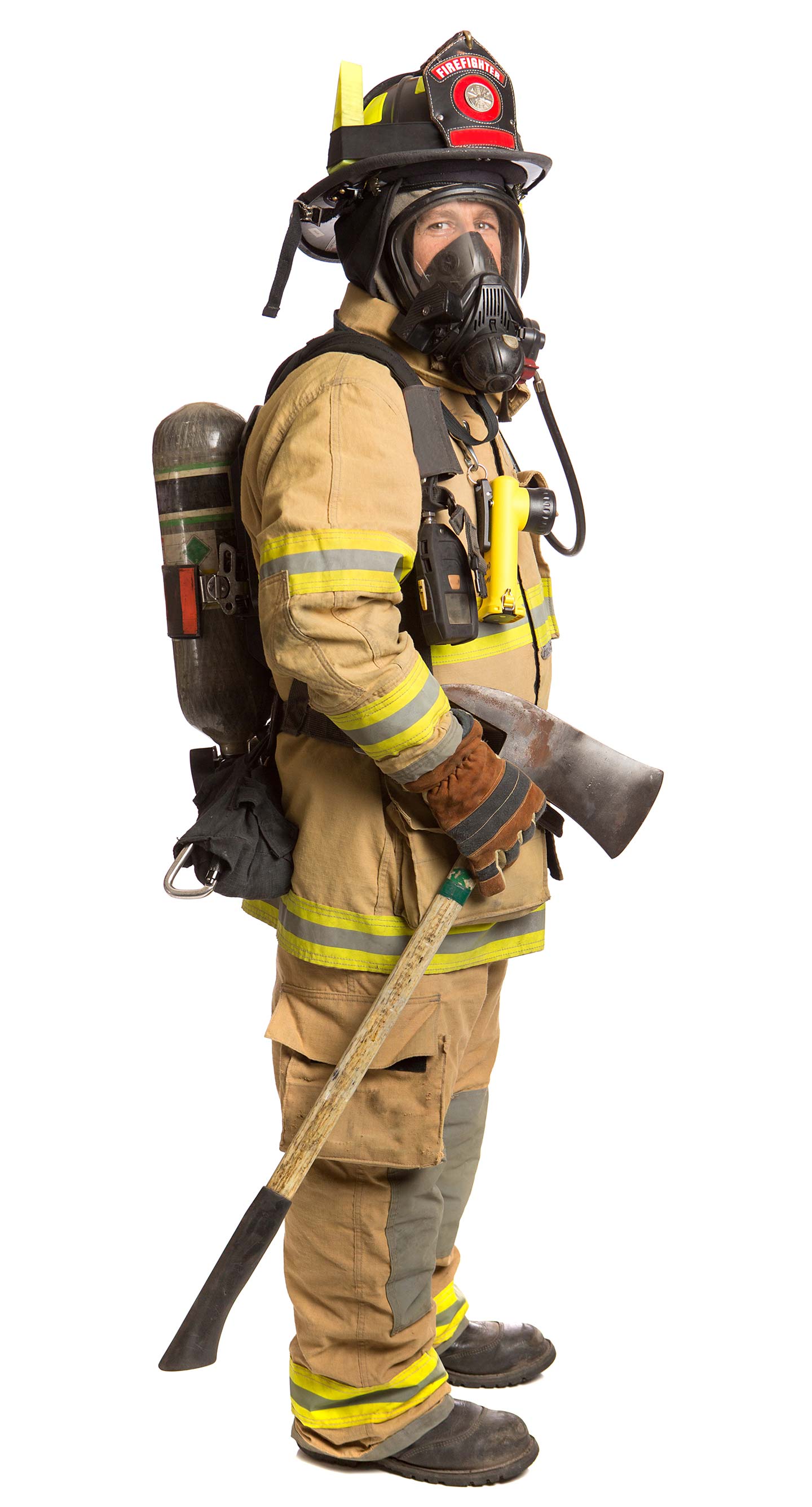
Fabrics made of Nomex® help the most trusted and reliable moisture barrier manufacturers provide strong, flame-resistant substrates for their liquid impermeable films.
Nomex® is inherently flame resistant and designed to stand up to heat, stay strong and protect the inner components.
Thermal liners made with Nomex® are thin, flexible, and highly breathable, providing superior protection that won’t impact mobility.

Nomex® Xtreme Performance
Nomex® Xtreme Performance solutions provide emergency responders with industry-leading performance before, during and after a fire.
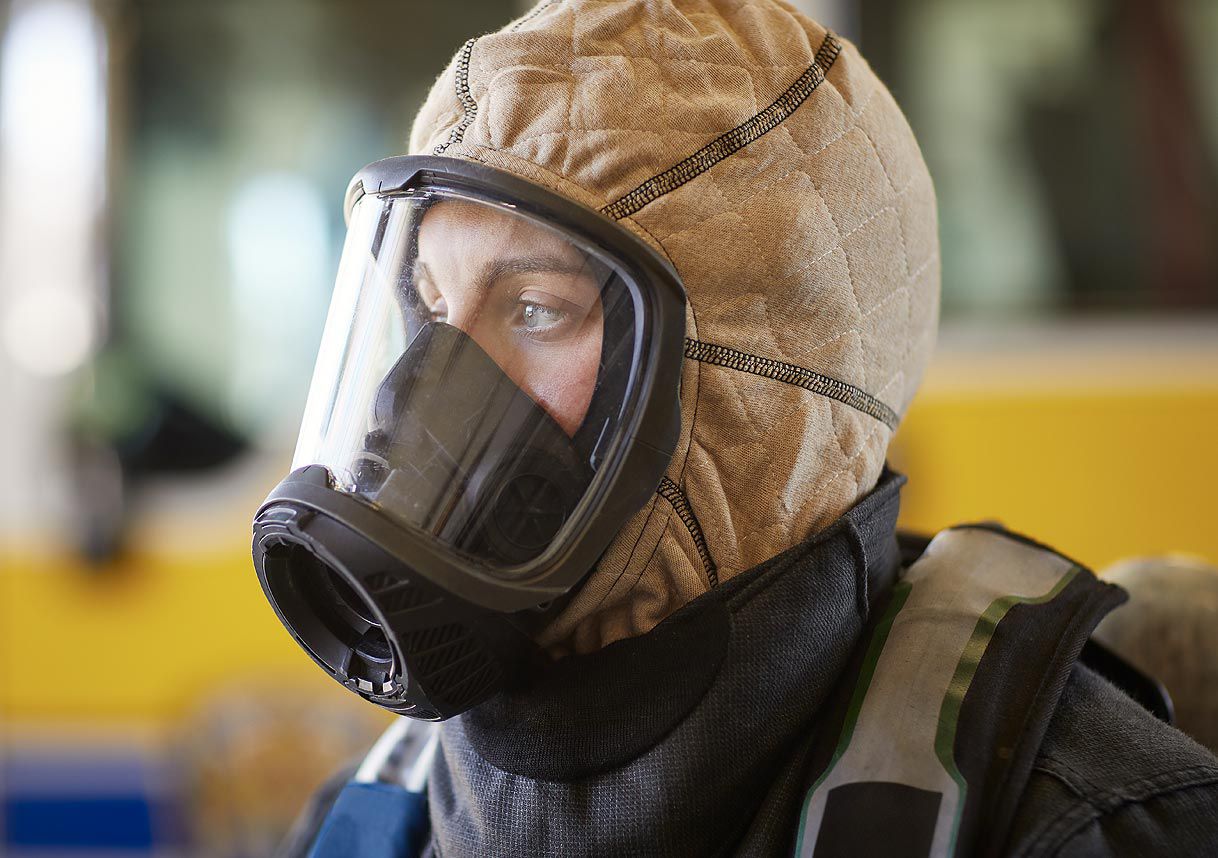
Nomex® Nano & Nano Flex
From reducing heat stress to enhancing particle barrier protection, Nomex® continues to provide next-generation FR solutions.
Nomex® Nano & Nano Flex
From reducing heat stress to enhancing particle barrier protection, Nomex® continues to provide next-generation FR solutions.
